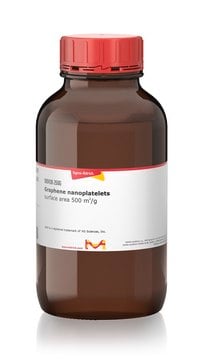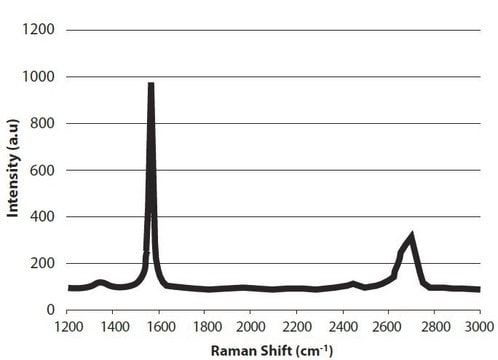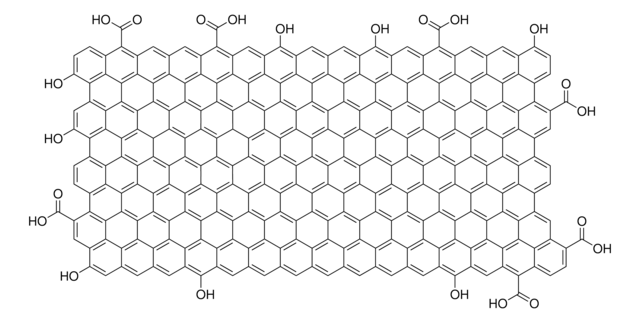900412
Graphene nanoplatelets
5 μm particle size
Synonyme(s) :
xGnP M-5
About This Item
Produits recommandés
Description
residual acid content: <0.5 wt%
Niveau de qualité
Forme
powder
Composition
oxygen content, <1%
Superficie
120-150 m2/g
Épaisseur
6-8 nm , average
Taille des particules
5 μm
Masse volumique apparente
0.03‑0.1 g/cm3
InChI
1S/C
Clé InChI
OKTJSMMVPCPJKN-UHFFFAOYSA-N
Vous recherchez des produits similaires ? Visite Guide de comparaison des produits
Catégories apparentées
Description générale
Note: Graphene nanoplatelets have naturally occurring functional groups like ethers, carboxyls, or hydroxyls that can react with atmospheric humidity to form acids or other compounds. These functional groups are present on the edges of the particles and their wt% varies with particle size.
Application
- Ultracapacitor electrodes
- Anode materials for lithium-ion batteries
- Conductive additive for battery electrodes
- Electrically conductive inks
- Thermally conductive films and coatings
- Additive for lightweight composites
- Films or coatings for EMI shielding
- Substrate for chemical and biochemical sensors
- Barrier material for packaging
- Additive for super-strong concrete
- Additive for metal-matrix composites
Informations légales
Code de la classe de stockage
11 - Combustible Solids
Classe de danger pour l'eau (WGK)
WGK 1
Point d'éclair (°F)
Not applicable
Point d'éclair (°C)
Not applicable
Certificats d'analyse (COA)
Recherchez un Certificats d'analyse (COA) en saisissant le numéro de lot du produit. Les numéros de lot figurent sur l'étiquette du produit après les mots "Lot" ou "Batch".
Déjà en possession de ce produit ?
Retrouvez la documentation relative aux produits que vous avez récemment achetés dans la Bibliothèque de documents.
Articles
Advances in scalable synthesis and processing of two-dimensional materials
Notre équipe de scientifiques dispose d'une expérience dans tous les secteurs de la recherche, notamment en sciences de la vie, science des matériaux, synthèse chimique, chromatographie, analyse et dans de nombreux autres domaines..
Contacter notre Service technique








